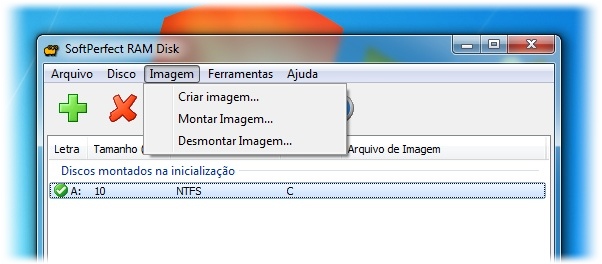

I feel a little silly that I did not try this a long time ago. So caching in a RAMdisk clearly should and does help. I guess that MSFS might be running into (a number of) W10 limitations when it comes to maintaining/accessing data inside the cache … especially while also loading assets (e.g. My frame rates seem a little higher and more consistent. So I installed a 16 GB NTFS ImDisk with a 15 GB rolling cache … in the way described by … and as pointed out, things seem a lot smoother with that RAM cache. So on a 64 GB system that leaves at least 32 GB unused. Since MSFS is not “good” at using available unused RAM (I never have seen MSFS using more than 16 GB RAM … which basically is the same size as my GPU RAM). I now also installed the ImDisk RAM drive and the sim really feels snappier … even while I have a fiber connection and an SSD. Thank you all for the content of this thread.
#Make ram disk for game windows#
I apologize if it’s a bit confuse and if I inverted or missed some points, but I installed it a long time ago and I my neurons were intensively used when I was younger.īut normally with these params you could get a perfectly functional MSFS cache on a RAMdisk, with the size you want, saved at shutdown (needs some seconds to achieve), and restored at Windows launch (no added time noticed).

Saved image of RAMDisk in …\Documents\RamDiskImage\ with size MSFS cache file (ROLLINGCACHE.CCC) with size In Explorer, RAMDisk (R:) and subfolder (FS20_CACHE) Evidently it could only be done after it has been created, so it’s the last point of procedure.
#Make ram disk for game driver#
In ImDisk Virtual Disk Driver (it’s C:\Windows\System32\imdisk.cpl, but if I remember correctly when installing an icon is created), mount the saved RAMDisk file. Once the RAMDisk is created, create a folder inside you’ll use in MSFS (MSFS don’t accept the root of the disk): exemple R:\FS20_CACHE\ In my exemple it’s …\Documents\RamDiskImage\ folder (manually created).Ĭheck “Synchronized at shutdown” for saving when shutdown.Įxcluded folders (If I remember correctly it’s automatic with choosen params). Place where the cache will be saved at shutdown and from where it will be restored at boot. In ImDisk settings (RamDiskUI.exe), 3rd tab,

No TEMP variables defined, in 2nd tab nothing changed nor checked. In Windows, ImDisk provides a storing feature from the box.1 & 2) in ImDisk settings (RamDiskUI.exe), 1st tab, size is set to 20Gb (choose the size you want). If we go deeper, then the next step is to put the whole Linux machine in RAM. Results should be better for non-SSD hard drives. That's pretty good, considering that we are comparing a very performant SSD with regular RAM. Results: the RAM disk saved 37% of the build time. m2 Maven repository and Guava project in a RAM drive.

#Make ram disk for game install#
īuilding that project using the Maven command: mvn clean install -DskipTests =trueĬhecking the results with a hard drive very performant SSD: Samsung EVO 960 (2GB/3GB read/write speed). Using RAM Memory to Speed Up Build in Java Maven-Based ProjectsĪllocating 2GB disk using ImDisk application and mount it to G disk:įetching a random Java project from GitHub (Guava). The main window shows all mounted RAM disks and features controls to add/remove disks, work with image files and access the application settings. To allocate RAM in Linux, you need to take two steps:


 0 kommentar(er)
0 kommentar(er)
